Author: Teng Yan, Chain of Thought
Translation: Golden Finance xiaozou
I was still an Axie Infinity player in 2021, and I was running a small scholarship guild. If you didn’t live through that era, let me tell you - it was absolutely wild.
Axie Infinity is a game that made people realize that cryptocurrencies and games can be combined. At its core, it is a simple Pokémon-style strategy game where players need to assemble a team of 3 Axies (very fierce fighters) Each Axie has unique abilities. You can lead your team to fight against other teams and get SLP tokens as rewards by participating in the game and winning.
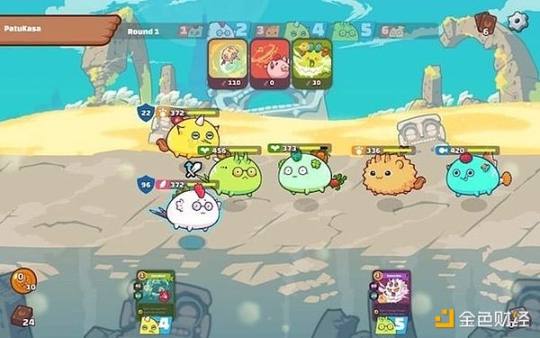
But what really excites non-gamers is the potential to make money through gaming. Axie’s meteoric rise is due to two main mechanisms:
The first is Breeding Axies. Take two Axies, breed them using SLP tokens, and voilà - a new Axie that combines the unique abilities of the two original Axies. Called OP Axies, they became a hot commodity, and a busy breeding market emerged.
The second mechanism is the scholarship program. Corporate players from all over the world began to lend Axies to "scholars". These players are usually from developing countries such as the Philippines or Argentina, and they cannot afford the upfront fee of more than $1,000 to buy 3 Axie NFTs. Scholars earn tokens by playing the game every day and share the profits with the scholarship guild, which usually takes a 30-50% cut.
In its heyday, and especially during the COVID-19 pandemic, Axie had a significant impact on local economies in developing countries. In the Philippines (where about 40% of Axie Infinity users are based), many players earn well above minimum wage. The Guild made huge profits.
This solves a key problem for game developers: player liquidity. By incentivizing players to actively play the game for several hours a day, Axie ensures that every player will have an opponent waiting for them, making the player experience more engaging.
But it comes at a price.
In order to solve the liquidity problem of players, Axie gave away a large number of tokens to encourage players to participate. The story begins here. Since SLP has no upper limit, the tokens are inflated wildly, the price plummets, and the ecosystem collapses. The tokens depreciate, and players will leave. Axie It went from being a “play for money” darling to a cautionary tale almost overnight.
But what if there was a way to solve the player liquidity problem without requiring unsustainable token economics?
This is what ARC/AI Arena has been quietly working on for the past three years. Now, it’s starting to bear fruit.
1. Player liquidity is the lifeblood

Player liquidity is the lifeblood of multiplayer games and the key to long-term success.
Many Web3 and independent games face the "cold start" problem - too few players to quickly match or form a thriving community. They don't have the marketing budgets or natural IP awareness that the big game companies have. This leads to a long wait. Issues such as time, inability to match, and high churn rates.
These games usually die a slow and painful death.
Therefore, game developers must prioritize player mobility from the start. Games need activities of one kind or another to remain fun—chess requires two players, while large-scale battles require thousands of players. Skill matching mechanisms are further improved The threshold has been raised, and more players are needed to keep the game fair and attractive.
For Web3 games, the stakes are even higher. According to Delphi Digital’s annual gaming report, user acquisition costs for Web3 games are 77% higher than traditional mobile games, making player retention critical.
A strong player base ensures fair matches, a vibrant game economy (i.e. more buying and selling of items), and more active social interactions, making the game more fun.
2. ARC - AI Gaming Pioneer
ARC, developed by ArenaX Labs, is leading the future of AI online gaming experiences. In short, they are using AI to solve the player liquidity issues that plague new games.
The problem with most AI bots in games today is that they are terrible. Once you spend a few hours getting the hang of them, they become incredibly easy to defeat. They are designed to help new players, but they don't Providing too much challenge or stickiness for experienced players.
Imagine AI players with skills that rival those of top human players. Imagine being able to play against them anytime, anywhere, without having to wait for matchmaking. Imagine training your AI players to mimic your play style and owning it. and earn rewards through their performance.
This is a win-win for both players and game companies.
Gaming companies use human-like AI bots to make games popular, increase player mobility, improve user experience, and increase retention rates - a key factor for new gaming entrants to survive in a highly competitive market.
Players gain a new way to engage with the game, building a stronger sense of ownership in the process of training and playing against the AI.
Let’s see how they do it.
3. Products and Architecture
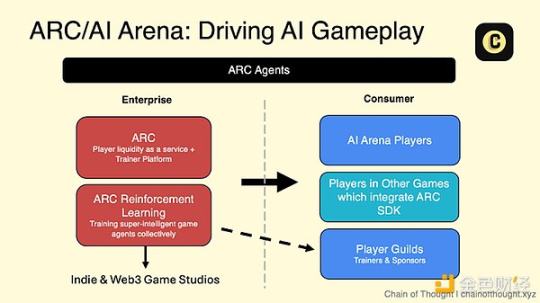
Parent company ArenaX Labs is developing a range of products to address player liquidity issues.
- Current products: AI Arena, an AI fighting game.
- New product: ARC B2B, an AI-powered gaming SDK that can be easily integrated into any game.
- New Product: ARC Reinforcement Learning (RL)
(1) AI Arena: Games
AI Arena is a fighting game reminiscent of Nintendo's Super Smash Bros, with all sorts of quirky cartoon characters fighting in an arena.
But in AI Arena, every character is controlled by AI - you play not as a fighter, but as their trainer. Your task is to use your strategy and expertise to train your AI fighters.
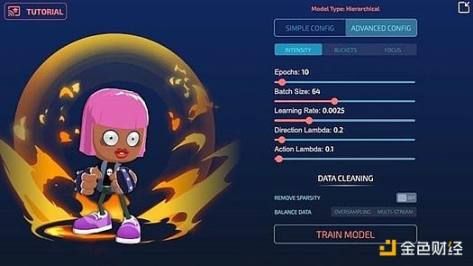
Training your fighters is like training a student to prepare for a fight. In training mode, you turn on data collection and create combat scenarios to fine-tune their moves. For example, if your fighters are close to their opponents, you can teach them Block with your shield, then combo. How to fight from a distance? Train them to perform ranged attacks.
You can control what kind of data is collected, ensuring that only the best moves are recorded for training. With practice, you can refine the hyperparameters to gain more technical advantage, or simply use the beginner-friendly default settings. Once training is complete, your AI fighters are ready to fight.
Everything is difficult at first - training an effective model takes time and experimentation. My first fighter fell off the platform several times, not because of being hit by the opponent. But after a few iterations, I succeeded. You have created a model that performs well. It is deeply satisfying to see that your training has paid off.
AI Arena introduces additional depth through NFT fighters. Each NFT character has unique appearance characteristics and combat attributes that affect gameplay. This adds another layer of strategy.
Currently, AI Arena is live on the Arbitrum mainnet and is only accessible to those who have AI Arena NFTs, perfecting the gameplay while maintaining community exclusivity. Players can join guilds, gather champion NFTs and NRN for on-chain battle rankings, and Get rewards. This is done to attract loyal players and drive competition.
Ultimately, AI Arena is a showcase for ARC’s AI training technology. While it is their entry point into the ecosystem, the true vision goes far beyond this game.
(2) ARC: Infrastructure
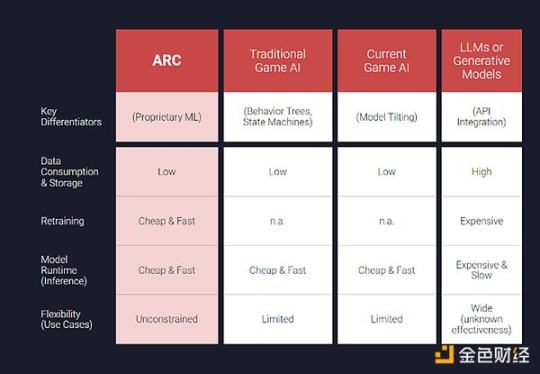
ARC is an AI infrastructure solution designed specifically for gaming.
The ArenaX team started from scratch and even developed their own gaming infrastructure because existing solutions such as Unity and Unreal could not meet their vision.
Over three years, they crafted a robust technology stack capable of handling data aggregation, model training, and model checking for both imitation and reinforcement learning. This infrastructure is the backbone of AI Arena, but its potential is yet to be realized. Much bigger.
As the team continued to refine their technology, third-party studios began to approach ARC looking to license or white-label the platform. Recognizing this demand, they formalized ARC’s infrastructure as a B2B product.
Today, ARC works directly with game companies to provide AI gaming experiences. Its value proposition is:
- Permanent Player Liquidity as a Service
- AI gameplay as a simple integration
Permanent Player Liquidity as a Service
ARC focuses on human behavioral cloning — training specialized AI models to mimic human behavior. This is different from the main uses of AI in games today, which use generative models to create game assets and LLMs to drive dialogue.
Using the ARC SDK, developers can create human-like AI agents and scale them to meet the needs of their games. The SDK simplifies the heavy lifting. Game companies can introduce AI without having to deal with the complexities of machine learning.
After integration, deploying an AI model only requires one line of code, and ARC takes care of the infrastructure, data processing, training, and backend deployment.
ARC works in partnership with gaming companies to help them:
- Capture raw gameplay data and transform it into meaningful datasets for AI training.
- Identify key gameplay variables and decision points related to game mechanics.
- Map AI model outputs to in-game activities to ensure smooth functionality—for example, tying an AI’s “right click” output to a specific game control.
How does AI work?
ARC uses four types of models for game interactions:
- Feedforward Neural Networks: Suitable for continuous environments with numerical features such as speed or position.
- Table Agents: Ideal for games with limited discrete scenes.
- Hierarchical and convolutional neural networks are under development.
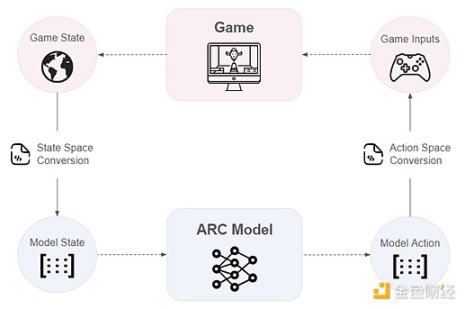
There are two interactive spaces related to ARC's AI model:
The state space defines what the agent knows about the game at any given moment. For a feedforward network, this is the combination of input features (such as the player's velocity or position). For a tabular agent, this is the discrete set of possible scenarios that the agent may encounter in the game. scene.
The action space describes what the agent can do in the game, from discrete inputs (like pressing a button) to continuous controls (like joystick movements). This maps to game inputs.
The state space provides input to ARC's AI model, which processes the input and generates outputs. These outputs are then converted into game actions through the action space.
ARC works closely with game developers to identify the most critical features and design the state space accordingly. They also test various model configurations and sizes to balance intelligence and speed to ensure that the game operates smoothly and is engaging.
According to the team, demand for their player liquidity services is particularly high from Web3 companies. These companies pay for better player liquidity, and ARC will use a large portion of this revenue for NRN token buybacks.
Bringing AI gameplay to players: Trainer Platform
The ARC SDK also gives web3 companies access to a trainer platform for their games, allowing players to train and submit agents.
As with AI Arena, players can set up simulations, capture gameplay data, and train blank AI models. These models will evolve over time, incorporating new gameplay data while retaining previous knowledge, without the need for each update. All starting from scratch.
This opens up exciting possibilities: players can sell their custom-trained AI agents on the marketplace, creating a new in-game economic layer. In AI Arena, skilled trainers can form guilds, where they can sell their custom-trained AI agents to other players. The company provides training skills.
For companies that fully integrate agent capabilities, the concept of Parallel Play also comes to life. AI agents are available 24/7 and can participate in multiple matches or game instances at the same time. This solves the problem of player liquidity. And creates new opportunities for user stickiness and revenue.
But that’s not all…
(3) ARC RL: From one-to-one to many-to-one
If AI Arena and the ARC Trainer Platform feel like single-player modes (where you can train your own AI models), ARC RL is similar to a multiplayer mode.
Imagine: an entire gaming DAO pooling its gameplay data to train a shared AI model that everyone jointly owns and benefits from. These “master agents” represent the collective intelligence of all players, driving collective effort and strategic collaboration. competition to change eSports.
ARC RL uses reinforcement learning (or “RL”) and crowdsourced human gameplay data to train these “super-intelligent” agents.
Reinforcement learning works by rewarding agents for optimal behavior. It works particularly well in games because the reward function is clear and objective, such as damage caused, gold gained, or victory.
There is precedent for this:
DeepMind’s AlphaGo, which beat professional human players at the game of Go, was trained through millions of self-generated games, refining its strategy with each iteration.
I didn’t realize this before, but OpenAI was already well known in gaming circles long before chatGPT was created.
OpenAI Five used reinforcement learning to crush top human players in Dota 2 and defeated the world champion in 2019. It mastered advanced strategies such as teamwork through accelerated simulations and massive computing resources.
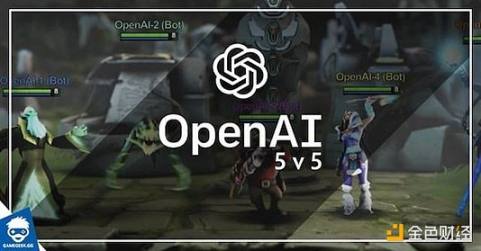
OpenAI Five runs millions of games per day, the equivalent of 250 years of simulated games per day, powered by 256 GPUs and 128,000 CPUs. It significantly speeds up learning by skipping graphics rendering.
Initially, the AI exhibited erratic behavior, such as wandering aimlessly, but it quickly improved, mastering basic strategies, such as creeping along paths and stealing resources, and eventually progressing to complex maneuvers, such as ambushes.
The key idea of reinforcement learning is that AI agents learn how to succeed through experience, rather than being directly told what to do.
ARC RL sets itself apart by using offline reinforcement learning. Instead of learning from its own trial and error, the AI agent learns from the experience of others. It’s like a student watching videos of others riding a bicycle and observing their success. and failures, and use that knowledge to avoid falling and improve faster.
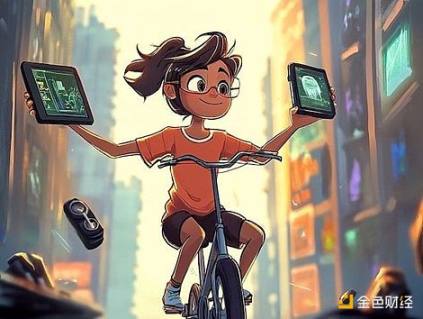
This approach provides an added benefit: collaborative training and shared ownership of models. This not only makes powerful AI agents more accessible, but also better aligns the incentives of players, guilds, and developers.
There are two key roles in the creation of a “super-intelligent” gaming agent:
- Sponsors: Guild leaders who stake a large amount of NRN tokens to launch and manage RL agents. Sponsors can be any entity, but are likely to be gaming guilds, DAOs, web3 communities, or even popular chains like Luna. Personalized agent.
- Players: Individuals who contribute their gameplay data to train the agent by staking a small amount of NRN tokens.
Sponsors coordinate and coach their teams of players, ensuring high-quality training data that gives their AI agents a competitive advantage in agent competitions.
Rewards are distributed based on the performance of the Super Agents in the competition. 70% of the rewards go to the players, 10% to the sponsors, and the remaining 20% to the NRN Treasury. This structure gives all participants a consistent Incentive mechanism.
Data Contribution
How do you get players to willingly contribute their gameplay data? Not easy.
ARC makes contributing gameplay data easy and rewarding. Players don’t need expertise, they just play the game. At the end of a session, they are prompted to submit data to train a specific agent. A dashboard tracks their contributions and their Supported proxies.
ARC’s attribution algorithm ensures quality by evaluating contributions and rewarding high-quality, impactful data.
The interesting thing is that even if you are a terrible player (like me), your data is useful. Bad gameplay can help the agent learn what not to do, while skilled gameplay can teach optimal strategies. Redundant data were filtered out to maintain quality.
In short, ARC RL is designed to be a low-friction, mass-market product centered around the shared ownership of agents that exceed human capabilities.
4. Market size
ARC's technology platform is versatile and supports a wide range of game types, such as shooters, fighting games, social casinos, racing, card trading games, and RPGs. It is tailor-made for games that need to keep players engaged.
ARC's products are primarily targeted at two markets:
ARC focuses on independent developers and companies, rather than established companies, which often have difficulty attracting players in the early stages due to limited brand influence and distribution resources.
ARC’s AI agents address this problem by creating a dynamic gaming environment from the outset, ensuring dynamic gameplay even in the initial stages of the game.
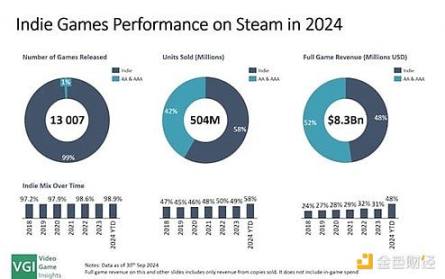
This may come as a surprise to many, but the indie gaming sector is a major force in the gaming market:
- 99% of the games on Steam are indie games.
- In 2024, indie games generated 48% of total revenue on Steam.
Another target market is Web3 games. Most Web3 games are developed by emerging companies and face unique challenges such as wallet login, encryption doubts, and high user acquisition costs. These games usually have player liquidity. problem, AI agents can fill in the gaps and keep the game engaging.
While Web3 gaming has struggled recently due to a lack of engaging experiences, it is showing signs of recovery.
For example, Off the Grid, one of the first AAA Web3 games, recently achieved early mainstream success, with 9 million wallets conducting 100 million transactions in its first month. This paves the way for widespread success in the industry, creating a new opportunity for ARC. An opportunity to support this revival.
5. ARC Team
The founding team behind ArenaX Labs has extensive expertise in machine learning and investment management.
Brandon Da Silva, CEO and CTO, previously led machine learning research at a Canadian investment firm, focusing on reinforcement learning, Bayesian deep learning, and model adaptability. He pioneered the development of 10 Billion-dollar quantitative trading strategy.
COO Wei Xie manages a $7 billion liquidity strategy portfolio at the same firm and leads its innovative investment program, focusing on emerging areas such as AI, machine learning, and Web3 technologies.
ArenaX Labs received $5 million in seed funding in 2021, led by Paradigm and participated by Framework ventures. The company received $6 million in funding in January 2024, led by SevenX Ventures, FunPlus/Xterio and Moore Strategic Ventures led the investment.
6. NRN Token Economics — A Healthy Reform
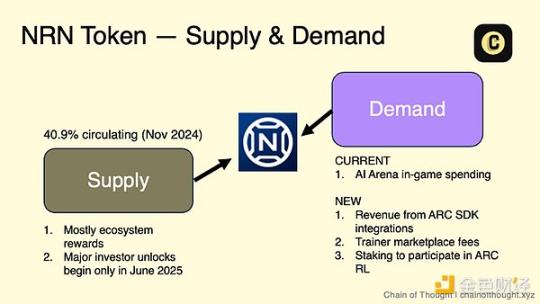
ARC/AI Arena has a token - NRN. Let’s take stock of the current situation.
Examining both the supply and demand sides will give us a clearer picture of where the trend is headed.
(1) Supply side
The total supply of NRN is 1 billion, of which approximately 409 million (40.9%) are in circulation.
At the time of writing, the token is priced at $0.72, which implies a market cap of $29 million and a fully diluted valuation of $71 million.
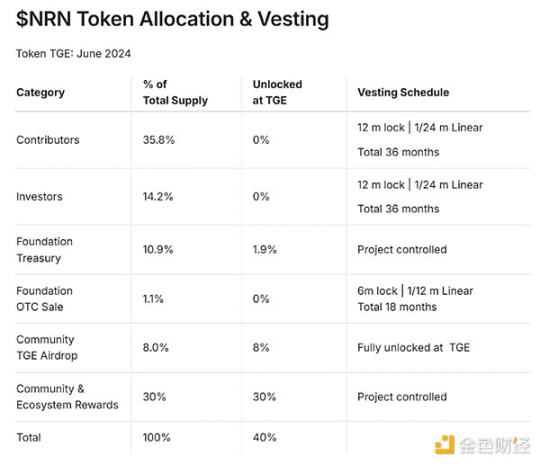
NRN was launched on June 24, 2024, with 40.9% of the circulating supply coming from:
- Community airdrop (8% of the total)
- Foundation Treasury (10.9%, of which 2.9% has been unlocked, unlocked linearly over 36 months)
- Community ecosystem rewards (30%)
The majority of the circulating supply (30% of 40.9%) consists of community ecosystem rewards, and the project manages these tokens and strategically allocates them to staking rewards, gaming rewards, ecosystem growth initiatives, and community-driven initiatives.
The unlocking schedule is reassuring, with no major events in the short term:
- The next unlock is the Foundation’s OTC sales (1.1%), which unlock linearly over 12 months starting in December 2024. This will only increase monthly inflation by 0.09% and is unlikely to cause significant concern.
- Investor and contributor allocations (50% of total supply) will not begin unlocking until June 2025, and even then, will be unlocked linearly over 24 months.
At this time, selling pressure is expected to remain fairly manageable, primarily stemming from ecosystem rewards. The key is trusting the team’s ability to strategically deploy these funds to drive growth for the protocol.
(2) Demand side
NRN v1 — Player Economy
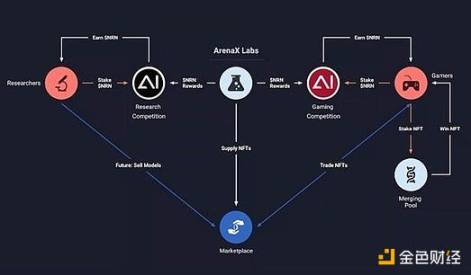
Initially, NRN was designed as a strategic resource tied to the AI Arena game economy.
Players stake NRN on AI players and receive rewards if they win, and lose part of their stake if they lose. This creates a direct stakes dynamic, turning it into a competitive sport and providing opportunities for skilled players to gain experience. Provide financial incentives for players.
Rewards are distributed using the ELO system, ensuring balanced payouts based on skill. Other revenue streams include in-game item purchases, cosmetic upgrades, and tournament entry fees.
The initial token model is entirely dependent on the success of the game and the continued willingness of new players to purchase NRN and NFTs to participate in the game.
Here’s why we’re so excited…
NRN v2 — Players & Platform Economy
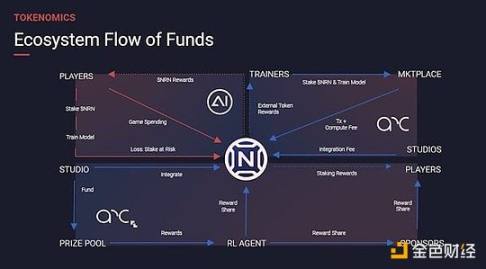
NRN’s improved v2 token economics introduces powerful new demand drivers by expanding the token’s utility from AI Arena to the broader ARC platform. This evolution transforms NRN from a specific game token to a platform token. In my opinion, this is a very positive change.
The three new demand drivers for NRN include:
Revenue from ARC integration. Game companies that integrate ARC will generate revenue for the treasury through integration fees and ongoing royalties tied to game performance. Treasury funds can drive NRN buybacks, grow the ecosystem, and incentivize players on the trainer platform.
Trainer Market Fees. NRN derives value from fees charged by trainers, where players can trade AI models and gameplay data.
Staking to participate in ARC RL: Both sponsors and players must stake NRN to join ARC RL. As more and more players enter ARC RL, the demand for NRN increases accordingly.
Particularly exciting is the revenue from gaming companies. This marks a shift from a pure B2C model to a hybrid B2C and B2B model, creating a sustained inflow of external capital into the NRN economy. This is particularly exciting as ARC has a broader target market. This revenue stream will exceed what AI Arena itself can generate.
Fees on the trainer marketplace, while promising, depend on the ecosystem reaching critical mass — enough games, trainers, and players to sustain active trading activity. This is a long-term business.
In the short term, ARC RL staking may be the most direct and reflexive demand driver. A well-funded initial reward pool and excitement about a new product launch could spark early adoption, drive up token prices and attract participants. This creates a feedback loop of rising demand and economic growth. However, on the other hand, if ARC RL has difficulty maintaining user stickiness, demand may quickly disappear.
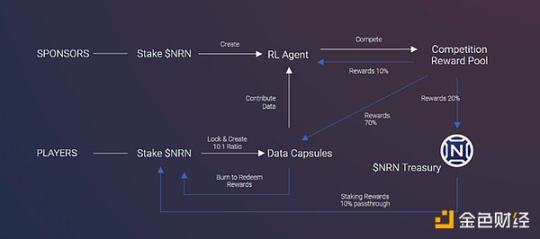
The potential for network effects is huge: more games → more players → more games added → more players. This virtuous cycle can position NRN as a core token in the Crypto AI gaming ecosystem.
7. The Mother of Game AI Models
What is the endgame? The strength of ARC is that it promotes a wide variety of game types. Over time, this allows them to collect a unique database of specific gameplay. As ARC integrates with more games, it can continue to Data is fed back into its own ecosystem, creating a virtuous cycle of growth and improvement.
Once this cross-sectional game dataset reaches critical mass, it will become an extremely valuable resource. Imagine using it to train general AI models for game development — opening up new possibilities for designing, testing, and optimizing games at scale. .
It’s still early days, but in the age of AI where data is the new oil, the potential is limitless.
8. Our thoughts
NRN Evolves into a Platform Game — Token Repricing
With the release of ARC and ARC RL, the project is no longer just a single-product gaming company, it now positions itself as a platform and AI gaming. This shift should lead to a re-rating of the NRN token, which previously The token is limited by the success of AI Arena. The introduction of a new source of tokens through ARC RL, coupled with revenue sharing agreements with game companies and external demand for trainer transaction fees, creates a broader, more decentralized environment for the utility and value of NRN. A more diverse base.
Success is closely linked to gaming partners
ARC’s business model ties its success to the companies it works with, as the revenue stream is based on token distribution (in Web3 games) and payment of game royalties. The games that tie in closely with it are worth a look.
If the ARC game is a huge success, the resulting value will flow back to NRN holders. Conversely, if the cooperative game struggles, the value flow will be limited.
Looking forward to more integrations with Web3 games
The ARC platform is a perfect fit for Web3 games, where competitive gameplay with incentives is perfectly combined with the existing token economy.
By integrating ARC, Web3 games can immediately enter the "AI agent" narrative. ARC RL brings communities together and motivates them to work towards a common goal. This also opens up new opportunities for innovative mechanisms, such as making "games to airdrops" By combining AI and token incentives, ARC adds depth and excitement that traditional games cannot replicate.
AI gameplay has a learning curve
AI gameplay has a steep learning curve, which can cause friction for new players. It took me an hour to figure out how to properly train my players in AI Arena.
However, ARC RL has a lower friction player experience because AI training is handled on the backend as players play the game and submit data. Another open question is how players react when they know their opponent is an AI. How does it feel? Does it affect them? Does it enhance or detract from the gaming experience? Only time will tell.
9. A bright future
AI will open up new groundbreaking experiences in the gaming world.
While teams like Parallel Colony and Virtuals are pushing the boundaries of autonomous AI agents, ARC is carving out its own niche by focusing on human behavior cloning—offering an innovative approach to solving player liquidity challenges without relying on unsustainable Token economics.
The transition from games to full-fledged platforms is a huge leap for ARC. This not only opens up greater opportunities through cooperation with game companies, but also reconstructs the way AI is integrated with games.
With its improved token economics and the potential for strong network effects, ARC’s bright future seems to have just begun.













